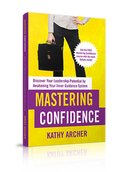|
Did you know that the more stressed, burnt out and overwhelmed with your job, there's a good chance the more your team is feeling the same and becoming more and more disengaged?
Is your team, and you like Sandy and her team? Sandy told me the other day that she felt her team lacked energy and enthusiasm for the work and that they seem to have lost patience for each other too! She wondered how much this had to do with her level of frustration, drained energy and apathy for the work. I suggested it might. Sandy asked me how she could bounce back and get her team to bounce back. They used to work well together, have fun, and enjoy their work. But, the last couple of years had taken a toll on all of them! I suggested Sandy consider looking at how to re-engage her employees as employee engagement is critical for strong and effective teams. I explained to her the research around employee engagement. Let me fill you in now. Why is employee engagement important? Gallup is the leading researcher on engagement. They define employee engagement as: The big problem is that only 20% of employees fall in the engaged category in Canada. Gallup says eight in 10 Canadians are either watching the clock, doing the bare minimum to get a paycheck, or worse, actively working against their employer. Yikes! Sandy has a team of 20, which means she may have only 4 of them actively engaged. When Sandy realized that, she was gobsmacked. But as we looked more deeply into it, she realized that might be right, and she would need to change that quick! My guess is you may want to consider increasing employee engagement on your team too! What can you do to increase employee engagement? When Sandy asked me what to do, I did the same thing I'd do if you were my client asking this question.
Gallup Q12 Employee Engagement Survey
Applying engagement strategies to staff meetings After reading that list, you may have already thought of several strategies to increase employee engagement. Some of those may be on a 1-1 basis, and that's an important part of increasing employee engagement. Sandy knew she needed to meet more with her team and talk to them about their growth and development rather than just putting out fires or dealing with current projects. Once Sandy came up with some 1-1 strategies, I shifted her attention to working on engagement strategies with teams. Sandy realized how she could nurture engagement when the team was together for meetings. She also realized that she could enlist the whole group as part of the process by structuring meetings differently. To give you a sense of what Sandy created for team meetings to increase employee engagement and what you can do, I've created a 3 C's approach to help you remember how to ensure you focus on employee engagement during staff meetings. Connect The first thing you need to do at a staff meeting is to connect to one another as human beings. We are not job descriptions that meet contract targets. We are people who serve other people. Thus we need to connect as people. To make sure that everyone feels connected in the first 5 to 10 minutes of the meeting, make sure that everyone has an opportunity to share their voice in the conversation. That can be starting with a one-word check-in, a team-building activity, a gratitude sharing exercise or an acknowledgement of each other. Whatever it is, make sure that everyone has the opportunity to put their voice into the circle. This is how Sandy ensured everyone connected: Sandy knew some people would feel this was a waste of time and even roll their eyes at the exercises. She overcame her hesitation by getting ahold of her thoughts before the meeting.
Contribute To create a group of engaged employees means they feel that they are contributing to something bigger than themselves. Therefore, the bulk of the staff meeting must meet that requirement. Remember these two questions for the Gallup research
Meetings should not be strictly information sharing. During the meeting, you are looking to gather people's ideas, concerns, and challenges. But more than that, you were also asking them to contribute to agenda items, topics and projects. If your employees ask themselves or their teammates why they are there or the point of the meeting, you've not contributed, and you've not engaged them. To ensure you are getting employees' contributions, make note as you go through the meeting: Has everyone had a chance to contribute to this meeting once again in a meaningful way? This is how Sandy ensured everyone contributed. At first, after the meeting was over, Sandy did a quick review and put a tick mark beside everyone's name that had contributed something to the meeting. Next, sandy sought out those who hadn't to see if they wanted to add something outside the meeting conversation. Then, during future meetings, Sandy made it clear that the goal was for everyone to contribute. That didn't mean she'd put people on the spot but created ways of allowing for everyone's voice, like round tables, breakout rooms and voting in polls on virtual meetings. Commit Commitment is twofold. It's about commitment to tasks and commitment to each other. First, make sure you know what each person is committing to complete as a result of the conversations during the meeting. Identify, in writing:
This is how Sandy ensured everyone committed to tasks: Sandy created a shared document that the team used at each meeting. The team did not take the old tasks and responsibilities off the document. Instead, they were updated, marked as complete or identified as needing further discussion. The document served as a commitment device, holding everyone, including Sandy, accountable for what they said they'd do. The second part of commitment is to make sure you end the meeting with a commitment to each other. Once again, we are people, humans in relationships. That means we have to continue to strengthen those relationships. As you end the meeting, provide space for each person to engage. If time permits, this can be done as a roundtable, allowing everyone to contribute one word to the question,
This is how Sandy ensured everyone committed to each other: When Sandy found time-crunched at the end of a meeting, she simply asked for a physical gesture of commitment.
A final reminder about created engaged teams I'm guessing you may be thinking that you don't have time at staff meetings for all of the above suggestions. If so, I'd ask you to reevaluate the purpose of your staff meeting. A meeting, by definition, is an engaged conversation. If you are only sharing information, that's not a meeting. It's an information-sharing session. So if that is what you are doing, then define it as such. If you are having a meeting, ensure to create connection, opportunities for contribution and a level of commitment to each other. Because when you connect, contribute and commit with a team, you will have an engaged team.
0 Comments
Are you at the point where you know you need to have another tough talk but don't want to? My client Jessica had that challenge this week. She was dreading it!
In our coaching session, Jessica learned to shift the way she thought about the upcoming talk so she could shake the dread and slip into confidence. Do you want to know how Jessica did that? Let me walk you through the steps I walked Jessica through to help her regain her confidence to deal with the situation. Which of these types of tough conversations bothers you most? Jessica and I talked about 3 kinds of tough conversations. She realized this one was the first but that she'd experience all of them at different times. I bet you have too!
Your thoughts make a tough conversation challenging The similarity between these types of tough conversations is our perspective. We THINK they will be tough. Therefore, our perspective or view on what will happen makes us believe the discussion will be tough.
Jessica had certainly done this. She could feel the anxiety in her body, feeling she'd be met with aggression when she addressed the issue, and Jessica was worried she'd fall apart. Which of these is your go-to reaction? Imagine a tough conversation situation that you know needs dealing with. Which of these is your typical reaction? Option # 1: You hope it will resolve itself, and you put that conversation off, and off, and off until it's a huge issue. Option # 2: You are anxious about dealing with the conversation, so you armour up, put your feelings aside and head into the conversation, perhaps someone aggressively. Your version may not be exactly as above, but you get the point. Jessica knew she was heading in the direction of the second. She thought if she could stuff down her emotions and deal with them matter-of-factly that she might get through it without falling apart. However, she was also very worried that it may not work either. You think your way into doubt, fear and hesitation. Jessica was losing sleep over this upcoming conversation. You may find that too. The issue at hand goes round and round in your head for a long time. However, if you are like most, you rarely slow down to consciously and intentionally think about it. This is because we don't consciously and deliberately decide how to address the issue at hand ahead of time. Instead, when we've had enough, we react. In the meantime....
While all of that is happening inside us, it's causing us to think we can't handle the tough conversation, and those thoughts create a lack of confidence to deal with them. I know that is NOT what you want! It certainly wasn't what Jessica wanted. Jessica and you, too, want the confidence to handle your job, team, and people. Let's change your thoughts and build that confidence! You can change your thoughts about that upcoming conversation Your doubt, fear and hesitation are thoughts. You can change those thoughts. When you change your thoughts, you see things from a different perspective, and it can help make you more confident in the situations. It's time for a different strategy for tough conversations When we start by taking time to think strategically about the issue, we can get control of our thinking mind, plan for how we will manage our emotions and strategize a way to address the situation. ▶ Step # 1 - Schedule in thinking time Rather than having thoughts about that conversation, you know you need to have, show up when you are trying to fall asleep, or some other equally inappropriate time, plan for thinking time. Then, schedule it into your calendar as a meeting with yourself. ▶ Step # 2 - Identify your triggers When you've already identified this conversation as tough it's because something is triggered in you. It could be any of the following or something else entirely.
▶ Step # 3 - Plan for the talk Ultimately that's often the one thing missing from an effective, difficult conversation, planning. You need to think strategically and plan for the conversation.
How Jessica did this Jessica used our coaching time to begin the planning process, and I helped her identify her big trigger. Jessica is a deeply caring person. She has so much compassion, and when someone hurts, she hurts with them. Jessica knew the news she had to give to this employee would hurt them. Jessica felt deeply that she had to help this employee through the conversation. They were losing part of their job. Jessica knew the resistance she would get would be justifiable. She also couldn't change the decision made by upper management to let go of this employee. She was the messenger. Being reminded of her strength of compassion helped her prepare and plan how to start the conversation, what to do when she felt herself tearing up and how to respond with compassion to the employee's anger. It would still be an emotional conversation, a hard talk and a challenge for both of them. The difference was that Jessica felt she didn't have to shut her emotions off. She just needed to be prepared to manage them. 👉 This preparation and awareness allowed Jessica to feel way more confident and in control heading into that talk. Your turn When you plan for your next tough conversation with conscious intention, you'll see how skilled you are. You will regain control of your emotions. You will think about how you CAN handle it. You'll feel more confident and capable because you are! Extra help If you'd like some help to plan for your next tough talk and a worksheet to guide you through the process, check this course inside of The Training Library: Preparing for a tough talk so you can handle it with integrity. The key take-a-way Tough talks are tough because you THINK they are tough. Think about them differently. Pause and plan for them. Prepare for your next tough talk. Perhaps it will shift from a tough talk to a critical conversation when you do. Or maybe you'll see it as a serious talk that's important to have. It may turn into a profound or thorough discussion. Words matter. So do your thoughts. Choose wisely and with intention! It's only February, and it's been a long year already for many of us. We are tired of the pandemic, tired of navigating working from home in the office, tired of winter, the cold, snow and the short days. And we are exhausted from whatever else is on our plates.
Yet, we want to come to work feeling energized and excited and to work with a group of employees who were also engaged, energized and excited to be there. We want to make an incredible difference, and we want a team that's alongside us and doing that work together. So how do you move from tired, lethargic, and feeling apathetic to being excited, energized, and engaged? Here are three ways Re-energize yourself Re-energize your team Re-energize your people one by one Defining energy Let's start with understanding what it means to have energy. VIA defines that energy as zest. Zest means approaching a situation, or life in general, with excitement and energy, not approaching tasks or activities halfway or halfheartedly. Zest, one of the 24 VIA character traits, has the strongest ties to overall life satisfaction and a life of engagement. But here's the problem: zest is consistently one of the lowest scoring traits worldwide. That's a problem if you and many others on your team are struggling with energy and enthusiasm. 3 ways to re-energize your tired nonprofit team Let's look at the 3 ways to re-energize your tired nonprofit team. Re-energize yourself Regardless of how much zest you have, you'll probably want to increase it or, at minimum, maintain it. Because it's tough to have the energy and enthusiasm to lead your team if you feel like a sloth? If you are curious where Zest lands for you on the VIA Character Strengths Assessment, click here to do the free assessment. If you are a member of The Training Library, you can use the various worksheets in this course to help you use your signatures strengths and strengthen your lesser-used strengths. Strategies for increasing your zest
Re-energize your team Even if you move to increase your zest or energy, you still may not be the most energized person on the team. That may not be your natural state. However, it might be for someone else. When we use people's strengths, they are more engaged, happy and impactful at work. So look around your team. Who is the most energized person? How can you leverage their excitement enthusiasm for work? Tony Swartz from the Energy Project is called the Chief Energy Officer. Perhaps there is someone on your team who would like that unofficial title. Alternately, it might be a shared responsibility. Sample strategies:
Re-energize your people one-by-one While in general, we need to look at boosting our energy, which will boost team morale, you'll also need to focus on individual challenges. Your job as a leader is to look at each individual on your team and support them in whatever way they need. This level of support requires you to tune in to your social intelligence lean into empathy, compassion and presence. Be aware of what each person is going through and consider helping support each of them in the way they need you. For example:
Moving your team from tired, lethargic, and feeling apathetic to being excited, energized, and engaged happens when you re-energize yourself, your team and your people one by one. You can do this! Start by choosing to take action. That will get the ball rolling and your energy in the right direction! |

Available on Amazon
Archives
March 2024
|
|
Leadership TRAINING for Nonprofit Leaders
Become a confident and competent nonprofit Leader: Join The Training Library membership Executive and Leadership COACHING Leadership Coaching for Nonprofit Executives, Leaders and ManagerCoaching |
PODCAST for Nonprofit Leaders
The Surviving to Thriving podcast: Strategies, systems and support to lead your nonprofit with confidence FREE RESOURCES to Grow your Leadership Skills Free Leadership Training Resources, Worksheets and Templates |
Become a CONFIDENT LEADER
|

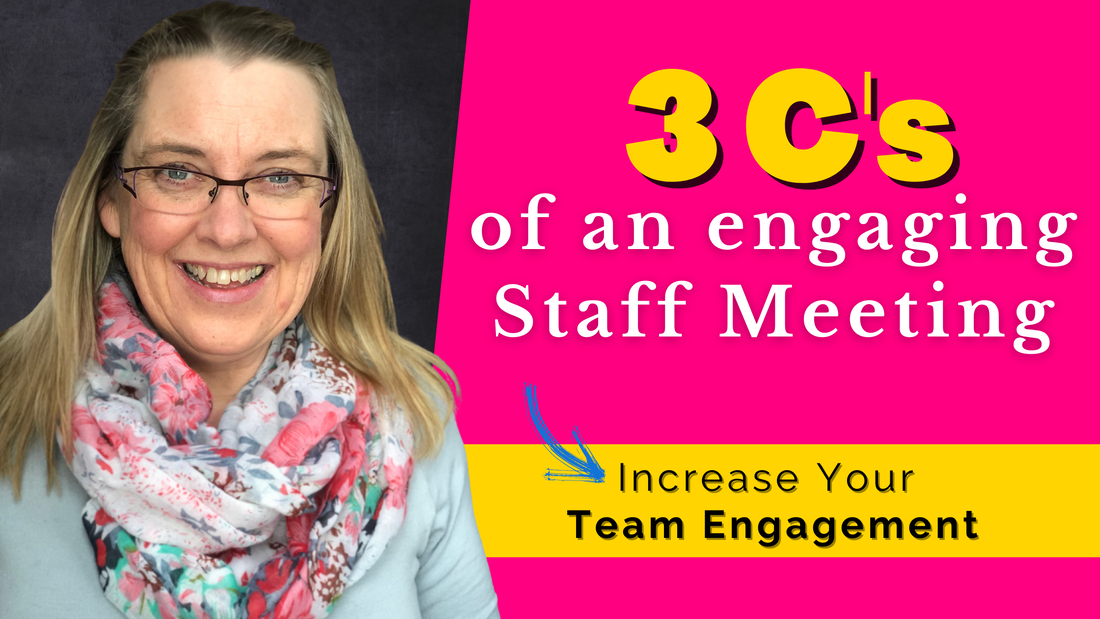
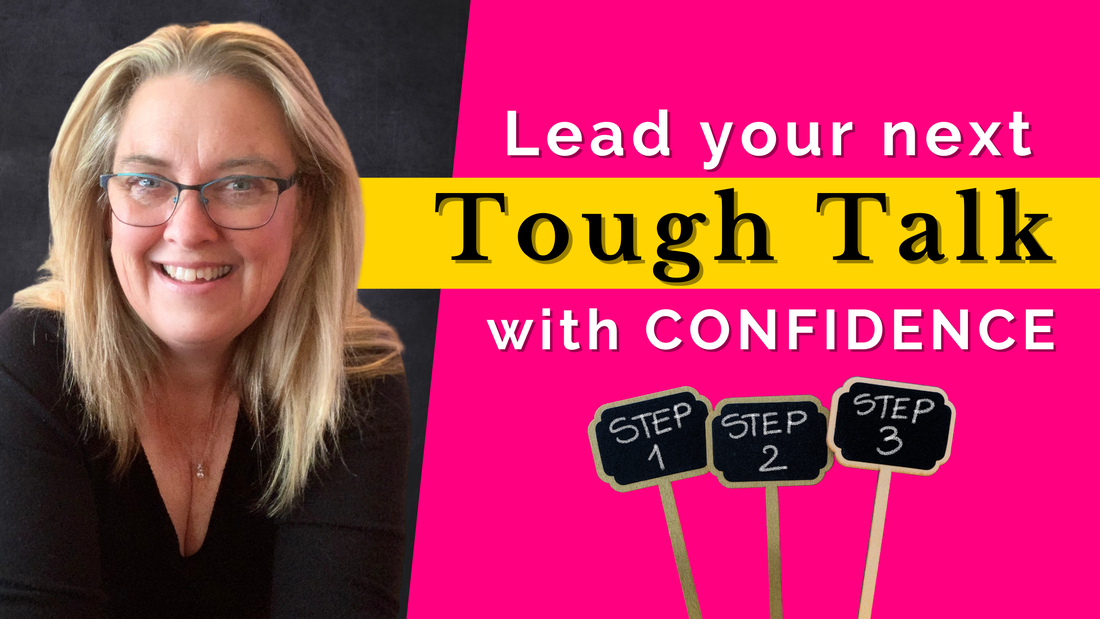
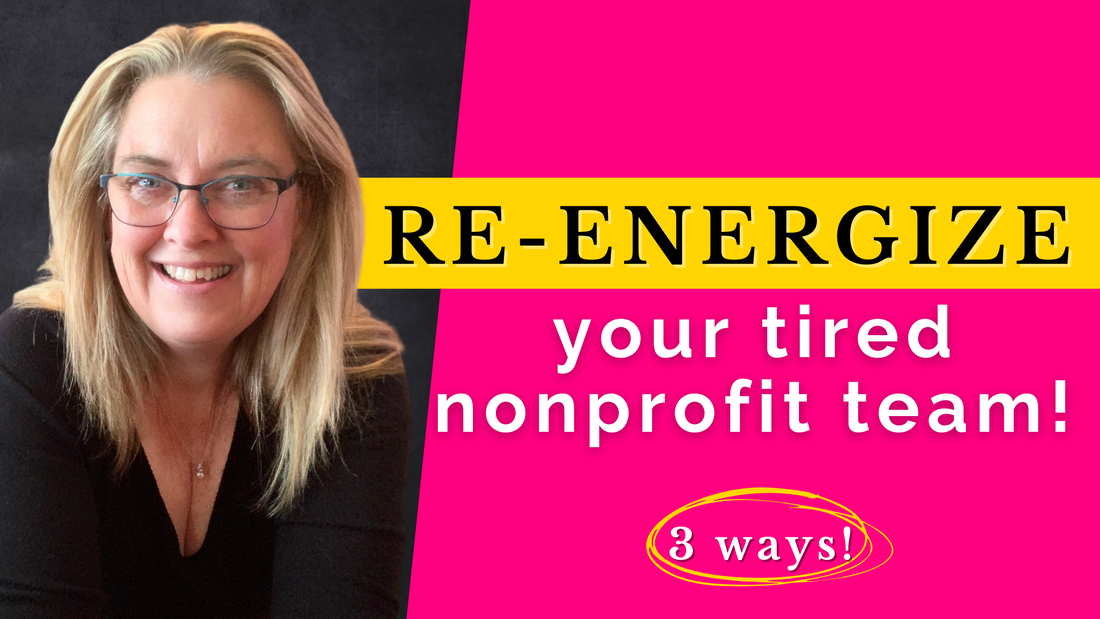

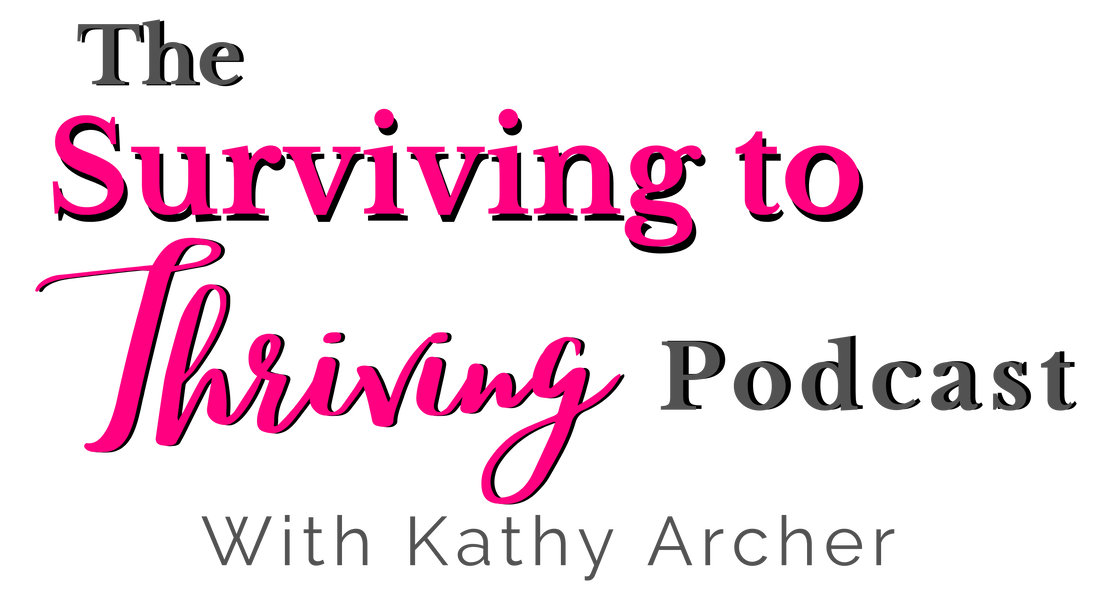
 RSS Feed
RSS Feed
